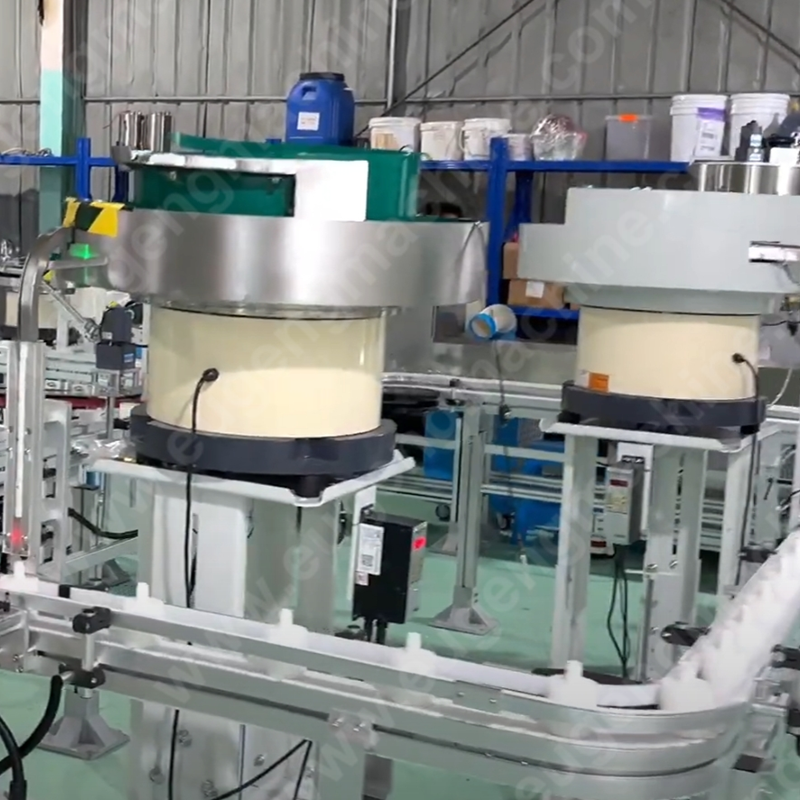Когато купувате машина за пълнене на балсами, разбирането на разходите помага да вземете по-умни решения. Разходите надхвърлят началната цена. Включването на дългосрочни разходи осигурява по-добра стойност. Обмисленият подход спестява пари и е в съответствие с бизнес целите ви. Тази стратегия максимизира ефективността и подкрепя устойчивия растеж на вашите операции.
Начални разходи
Тип машина и технология
Видът на машината, която изберете, значително влияе върху първоначалните разходи. Ръчните машини често са по-достъпни, но изискват повече труд. Полуавтоматичните машини намират баланс между цената и ефективността. Пълноавтоматичните машини, макар и по-скъпи, предлагат moden технология и по-висока продуктивност. Трябва да оцените мащаба на вашето производство и да решите кой вид машина е най-подходящ за вашия бизнес.
Размер и производствен капацитет
Размерът и капацитетът на машината също влияят върху цената й. Машини, проектирани за малкомащабно производство, обикновено струват по-малко. Всичко прието, ако вашият бизнес изисква голямо обемно изход, може да е необходимо да инвестирате в по-голяма машина с по-голям капацитет. Трябва да вземете под внимание текущите си производствени нужди и плановете за бъдещ растеж.
Характеристики и опции за персонализация
Допълнителните функции и опции за персонализация могат да увеличат цената на машина за напълване с балсам. Функции като прецизно напълване, множество дюшета или системи за автоматично промиване добавят удобство, но струват по-скъпо. Персонализацията ви позволява да адаптирате машината според вашите специфични нужди.
Съображения за оперативни разходи
Консумация на енергия
Използването на енергия пряко влияе на месечните ви разходи. Машини с по-висока енергийна ефективност намаляват разходите за електричество с времето. Напредналите модели често разполагат с технологии за спестяване на енергия, които могат да намалят сметките ви за комунални услуги. Трябва да проверите мощността на машината и да я сравните с производствените си нужди. Машина, която консумира по-малко енергия, докато поддържа производителност, може да ви спести пари в дългосрочен план.
Изисквания за труд
Заплатните разходи зависят от нивото на автоматизация на машината. Ръчните машини изискват повече ръчна работа, което увеличава заплатните разходи. Полуавтоматичните и пълноавтоматичните машини намаляват нуждата от ръчно вмешателство. Това може да спести време и да намали разходите за персонал. Трябва да оцените капацитета на вашия трудов ресурс и да определите колко автоматизация ви трябва за бизнеса си.
Обслугване и подравки
Редовната поддръжка осигурява гладкото функциониране на машината. Въпреки това, разходите за поддръжка и ремонт могат да се натрупат с времето. Машини с издръжливи компоненти и надеждно качество на изработката обикновено изискват по-малко ремонти. Трябва да прегледате гаранцията и поддръжката на производителя. уСЛУГИ машина с лесно заменяеми части и достъпна техническа поддръжка може да намали времето на престой и да спести пари за ремонти.
Дългосрочни съображения за стойността
Издръжливост и качество на конструкцията
Издръжливостта на машина за пълнене с балсам пряко влияе на нейния живот. Машините, изградени с висококачествени материали и компоненти, издържат по-дълго и изискват по-малко ремонти. Трябва да търсите модели с здрава рамка, корозионноустойчиви части и репутация за надеждност. Издръжливата машина намалява времето на престой и осигурява последователна производителност.
Масштабируемост за бъдещ растеж
Вашият бизнес може да се разраства, а производствените ви нужди да се увеличат. Машина, която може да се адаптира към вашите операции, гарантира, че няма да трябва да я заменяте предварително. Търсете функции като регулируеми настройки, модулни конструкции или възможността да добавите повече дюшета. Тези опции ви позволяват да разширите капацитета без да покупате нова машина.
Възвръщаемост на инвестицията (ROI)
Машината за пълнене на балсами е значителна инвестиция, така че изчисляването на нейната възвръщаемост е от съществено значение. Обмислете как машината ще подобри ефективността, ще намали разходите за труд и ще повиши качеството на продукта. По-високата начална цена може да донесе по-добри възвръщаемости, ако машината увеличи производителността и намали оперативните разходи. Трябва също така да вземете предвид колко бързо машината ще се изплати чрез спестявания и увеличен обем на продукцията.
Скритите разходи
Обучение и интеграция
Експлоатацията на машина за напълване на балсам може да изисква обучение за вашите служители. Новото оборудване често се среща с крива на учене. Може да трябва да инвестирате в обучителни сесии или програми за обучаване при прием на нови служители. Някои производители предлагат безплатно обучение, докато други търсят допълнителна плата. Трябва да оцените сложността на машината и нивото на уменията на вашия екип.
Интеграция със съществуващи системи
Интегрирането на новата машина с текущите ви производствени системи може да включва допълнителни разходи. Може да имате нужда от софтуерни актуализации, модификации на хардуера или техническа поддръжка. Машините, съвместими с стандартните системи, намаляват предизвикателствата при интеграцията. Преди да направите покупката, проверете дали машината работи seemlessly със съществуващия ви setup. Този стъпка предотвратява забавяния и избягва скъпи корекции.
Съответствие с индустриалните стандарти
Съответствието на индустриалните стандарти е от съществено значение за бизнеса ви. Някои машини за напълване на бальсам може да изискват улучшения или сертификати, за да се conform с регулативите. Тези улучшения могат да добавят към вашите разходи. Трябва да проучите стандартите във вашия сектор и да потвърдите, че машината им съотвества. Несъответствието може да доведе до штрафове или правни проблеми, които могат да са скъпи.
Оценяването на всички фактори на разходите гарантира, че правите разумна инвестиция. Балансирането на краткосрочните разходи с дългосрочната стойност подобрява възвръщаемостта на инвестицията. Проучването на машините, консултирането с производители и сравняването на опциите ви помагат да намерите най-доброто решение.

 EN
EN
 AR
AR BG
BG HR
HR CS
CS DA
DA NL
NL FI
FI FR
FR DE
DE EL
EL HI
HI IT
IT JA
JA KO
KO NO
NO PL
PL PT
PT RO
RO RU
RU ES
ES SV
SV TL
TL IW
IW ID
ID LV
LV LT
LT SR
SR UK
UK VI
VI HU
HU TH
TH TR
TR FA
FA MS
MS UR
UR BN
BN LO
LO LA
LA PA
PA
